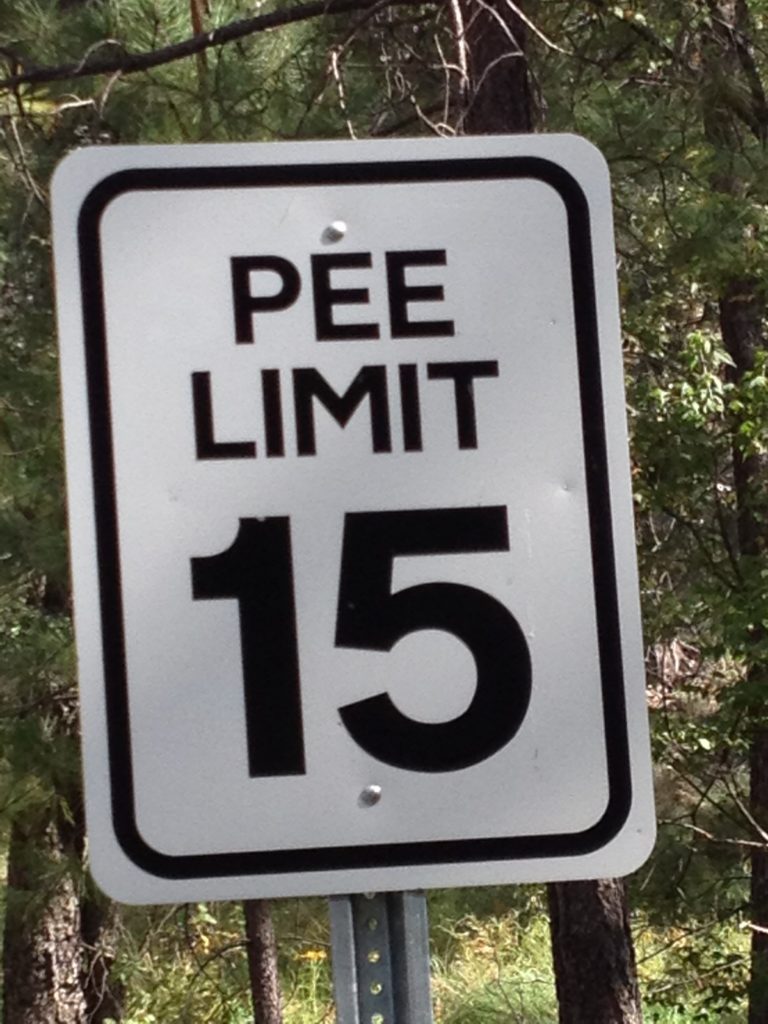One of the many nicknames I earned as a child was accurate: “Swivel head.” It wasn’t because I resembled the girl in The Exorcist, with my head going around. In fact, it never did go completely around, just left-right, right-left, left-right whenever we traveled in our green and white Ford station wagon. I had to experience everything. I am still a swivel head in a car or on a train, ferry, or bus. Even on an airplane.
Please note: Walking (or any related form of locomotion, such as jogging) doesn’t allow for much swivel heading. Too many body parts must work together to achieve forward motion. Also, I reduce the amount of swivel heading I do when I’m driving to keep my eyes on the road ahead and check the mirrors. But, as an expert swivel header, I am often the first to notice something such as the single sheep among all the cows.
Swivel-heading is an extreme form of paying attention, which I’ve found useful for writing. Of course, usually it only applies to vision. I don’t have an equivalent talent for hearing, touch, or smell. I probably miss many intriguing smells, don’t hear a sound others hear, or get to touch much. That’s too bad, because my writing might improve if I could heighten my awareness by leveraging the other senses.
Noticing and Paying Attention
Paying attention is superior to noticing, which implies a fleeting action, little attentiveness, and a quick return to the interrupted activity. Paying attention requires an intermission and some industry to give meaning to the action.
Here’s an example of noticing: Elmer noticed a bee circling his ice cream cone and licked around the lip of the cone to get as much of the liquifying delight as he could.
Here’s an example of paying attention: Elmer wondered whether the bee circling his ice cream cone would drown in the liquifying delight before it could secure enough sugar to return to the hive.
Advantage to a Writer
A writer can, of course, notice something and then enter it into a piece of writing. As far as the brain is concerned, however, noticing is shallow, cursory, flat, perhaps frivolous, and likely to be forgotten. When something a writer has merely noticed has made it into a piece of writing, that’s cause for celebration (or, perhaps, the writer noticed the same thing later and, then, actually paid attention to it).
Writers go further and deeper when they pay attention, rather than simply notice, and they are more likely to remember their experience. They’re ready when a piece of writing summons them to enhance a thesis, turn a corner in the plot, develop a character quirk, or create the perfect mise en scène to convey a character’s mood.
Remembering an Experience
Here are some ways to remember an experience:
- Try to understand it. Put it into your own words.
- Organize it by linking it with something you already know. (“This experience is like fishing.”)
- Group it with what you already know. (“This experience fits in my ‘selfish people’ group.”)
- Recreate the experience silently or tell it to someone else. Do this more than once.
- Act it out. Imagine yourself seeing, hearing, tasting, or touching something. . .and then recreate that action.
- Create what many call a “memory palace.” This is the layout of a building. In your mind, put what you paid attention to in part of your building. For example, put the experience of fishing in the kitchen because that’s where you anticipate frying trout. Add a new room if you just can’t find a place for your new memory. See Jason Foer’s TED video “Feats of Memory Anyone Can Do” (posted May 2012) for more about memory palaces.
- Write it out (perhaps on a notecard with a summary word at the top, such as “Chalets.”
- Translate what you experienced into other senses. For example, if you heard bells, create a visual image of bells ringing, touch the hard cold brass of a bell, or (maybe) imagine yourself licking a bell. (What would it taste like?)
Paying Attention to Anomalies
Writers will get more from paying attention than noticing, especially if they forage for anomalies. Anyone can notice or pay attention, but a successful writer is the one likely to pursue an anomaly.
An anomaly is something that differs from what is considered normal, standard, or expected. Think of an anomaly as a quirk, oddity, outlier, or variation.
In science, an anomaly sometimes leads to a discovery. The statisticians notice that a data set has an aberration. Perhaps the line of the graph is going up-down-up-down, erratically. “What’s going on there?” cries the person who has been paying attention.
Some anomalies have become a part of our language. They introduce some kind of quirk or unexpected relationship. These sayings or proverbs are good examples:
- You’re too good to be true. (If you’re good, you can’t be true; if you’re true, you can’t be good.)
- A thing begun is half done. (Begun is the same as half-done?)
- Barking dogs seldom bite. (Don’t worry about that barking dog! Really!)
- The best things in life are free. (Expect to pay nothing for what you desire.)
- Every cloud has a silver lining. (Clouds are white, gray, blue or black.)
- A picture is worth a thousand words. (Really?)
Sometimes, writers use anomalies as the basis of their work. Here is a part of a poem by Balkaran who wrote on Twitter about a woman who was
“A lot of flower and a lot of fall. . . .
“A lot of rainbow and its preceding hail
“Both whisper and the daunting wind
“Lot of beautiful without conforming scale.”
Here are a few home-made examples of anomaly:
- She had all her ducks in a row except for the pink one that faced backwards.
- The entire Clement family, except for Jason’s family, lived on Broadway.
- The young man climbing the ladder to the high diving board adjusted his fluffy earmuffs on the way up.
- I wanted only one of the kittens, the smallest one that had six toes.
- One tall blue flower stood above the desiccated desert.
- Every morning, Terence noticed that the SUV-sized stones had moved a few inches across the unmown field.
- Instead of a bubblegum-colored flamingo in the front yard of her Florida house, Estelle had set up three stuffed black-and-white penguins.
- The lowest branch of the tall pine offered me a perfect bench for a picnic.
- Her watchband had been stretched so that it served as a headband, with the clock itself showing 1:00 just above her nose.
- All but one of the fashionable ladies taking tea wore an elaborate hat.
- The largest snowball featured a bright blue baby’s “binky.”
- Only one cow remained standing in the field as the rain poured down.
Can you think of others?
A single picture may suggest an anomaly (with far fewer than a thousand words):



